
Louis-Vincent-Joseph Le Blond, comte de Saint-Hilaire was a French general during the Revolutionary and Napoleonic Wars, described by Lejeune as "the pride of the army, as remarkable for his wit as for his military talents."

Étienne-Marie-Antoine Champion, comte de Nansouty was a French cavalry commander during the French Revolutionary Wars who rose to the rank of General of Division in 1803 and subsequently held important military commands during the Napoleonic Wars.

Armand Philippon, sometimes called Phillipon, was a French soldier during the French Revolution and the subsequent First French Empire.
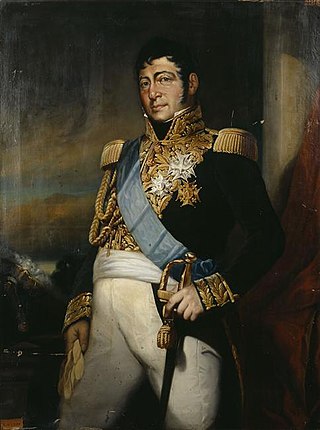
Étienne Tardif de Pommeroux, comte de Bordesoulle was a French nobleman and soldier, who fought in the Napoleonic Wars and the Spanish expedition.

Pierre Belon Lapisse, Baron de Sainte-Hélène commanded an infantry division in Napoleon's armies and was fatally wounded fighting against the British in the Peninsular War. He enlisted in the French Army during the reign of Louis XVI and fought in the American Revolutionary War. Appointed an officer at the start of the French Revolutionary Wars, he rose in rank to become a general officer by 1799. From 1805 to 1807 during the Napoleonic Wars, he led a brigade in the Grande Armée at Dornbirn, Jena, Kołoząb, Golymin, and Eylau. After promotion he commanded a division in the thick of the action at Friedland in 1807.
Henri Marie Lenoury, sometimes incorrectly called Noury, was a French general born in Craconville, France.
The Army of Naples was a French Army unit which took this name following its capture of Naples in 1799. It was related to the Army of Italy. The Army of Naples was virtually annihilated after the Battle of the Trebbia: more than half of the personnel were casualties.

Pierre Marie Barthélemy Ferino,, was a general and politician of France. Born in the Savoy, he was the son of a low-ranking officer in the Habsburg military. In 1789, during the French Revolution, he went to France, where he received a commission in the French Army. In 1793, his troops deposed him, for his strict discipline, but he was immediately reinstated and rose rapidly through the ranks of the general staff. He helped to push the Austrians back to Bavaria in the 1796 summer campaign, and then covered Moreau's retreat to France later that year, defending the Rhine bridge at Hüningen until the last units had crossed to safety.
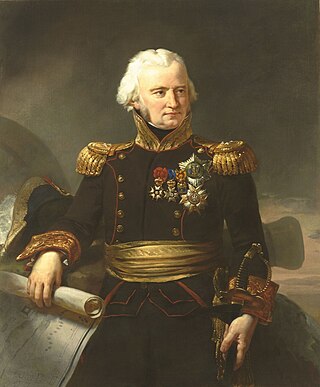
Jean Ambroise Baston de Lariboisière, also Count de Lariboisière, was a general of artillery of the First French Empire. He fought in the French Revolutionary Wars and the Napoleonic Wars and died of fatigue at Königsberg in East Prussia on 21 December 1812, during the Grand Army's retreat from Moscow.
Étienne d'Hastrel de Rivedoux was a general of the First French Empire who fought in the French Revolutionary Wars and the Napoleonic Wars. He was born 4 February 1766 at Pointe-aux-Trembles in Quebec, which was then the British colony, Province of Québec, the son of an officer in the French military. His father had served in India during the Seven Years' War, and later in Quebec.

Jean Jacques-Antoine Vital François de Chambarlhac was a French infantry commander during the French Revolutionary and Napoleonic Wars.

Nicolas-Marie Songis des Courbons, Count of the Empire,, was a French artillery commander during the French Revolutionary Wars, who rose to the rank of General of Division in 1800 and served as commander of the Grande Armée artillery between 1805 and 1809, during the Napoleonic Wars.

Nicolas Bernard Guiot de Lacour led infantry and cavalry brigades during the First French Empire under Napoleon. He joined the French Royal Army in 1787 and was sent to quell the Haitian Revolution in 1791. He fought in the Army of the North starting in 1793. He was promoted to chef de brigade (colonel) in 1797 and to general of brigade in 1800. He led a cavalry brigade at Caldiero in 1805 and initially commanded the Siege of Gaeta in 1806. He fought at Abensberg, Landshut, and Eckmühl in 1809 before being fatally wounded at the Battle of Wagram on 6 July 1809. Promoted general of division on the battlefield, he died of his wounds on the 28th. He is one of the names inscribed under the Arc de Triomphe on Column 11 and his bust is in the Hall of Battles at the Palace of Versailles.
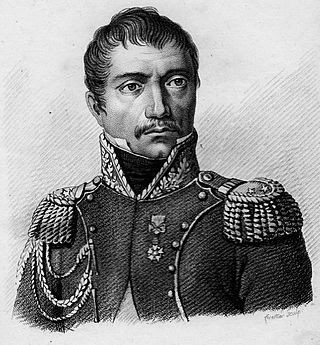
Antoine François Eugène Merlin was a French soldier and general of the French Revolutionary and Napoleonic Wars, who fought in central Europe, the Peninsular War and at Waterloo. Later in life, he became a politician and sat in the Chamber of Deputies as a supporter of the July Monarchy.
Pierre Charles Pouzet, baron de Saint-Charles was a French general who was killed at the battle of Aspern-Essling.
Jean Pierre Lanabère, born on December 24, 1770, at Carresse-Cassaber. and died on September 16, 1812, in Mozhaysk, Russia. Jean was born a son to a lawyer and a notary. He was a French general of the First French Empire during the Napoleonic Wars.
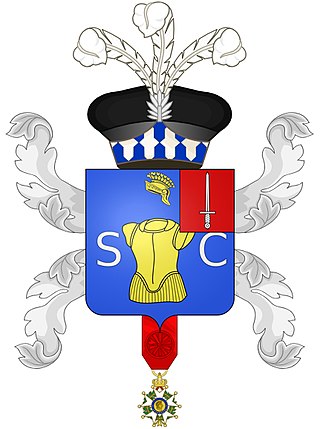
Jean-Chrysostôme Calès was a French military officer who served during the French Revolutionary Wars and the Napoleonic Wars. He was born on 27 January 1769 in Caraman (Haute-Garonne) and died on 21 April 1853 in Cessales (Haute-Garonne).

Hugues Alexandre Joseph Meunier was a French Army general during the French Revolutionary Wars and the Napoleonic Wars.
Charles-François Bourgeois was a French general during the French Revolutionary Wars and the Napoleonic Wars.
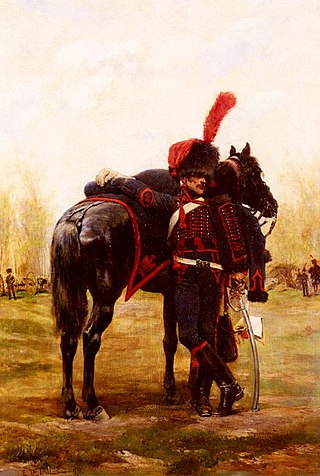
The Horse Artillery of the Imperial Guard is a mounted artillery unit integrated into Napoleon I's Imperial Guard. Although it was not formed as a regiment until April 1806, its origins date back to May 1797, when it was first trained in the Army of Italy.
















